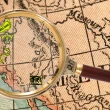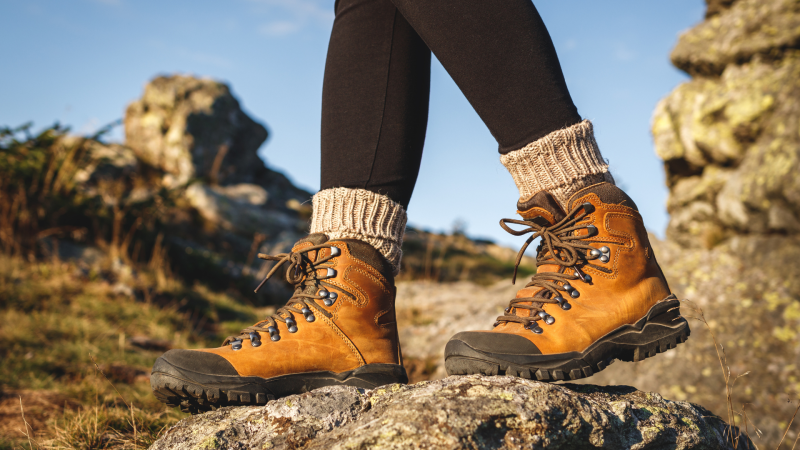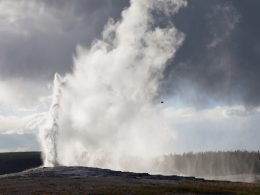If you’re new, planning a hiking trip can be intimidating. If you don’t take it seriously, you could endanger yourself and others.
You don’t have to be a wilderness expert to organize an epic adventure. You can start planning your next hiking trip with the right tools and a little practice.
Today, we’re sharing our easy tips for planning a hiking trip. So, lace up those hiking boots, and let’s get started!
How Long Should a Hike Be for Beginners?
The length of hike for beginners will typically be less than five miles. However, it will significantly depend on their physical condition and the trail’s difficulty. Attempting to bite off more than you can chew will likely end with a few four-letter words and a lot of discouragement.
Always be sure to consider everyone in your group. They’ll hold everyone back if a trail is too difficult or too long for them. You don’t want resentment or ill feelings to develop within your tribe. Thoroughly evaluate each hiker in your group and their abilities to conquer whatever path will be before you.
HOT TIP
Be sure to read The Wrong Way to Handle a Mountain Lion Encounter before going on your next hike!
What Is the #1 Etiquette Rule While Hiking?
Following hiking etiquette is crucial and helps ensure everyone has a great time. The #1 etiquette rule while hiking is to follow Leave No Trace principles. Following these essential guidelines means leaving the wilderness how you found it. This helps ensure that trails and wilderness areas remain available for others.
Some basic Leave No Trace principles include staying on the trail, picking up trash, and respecting wildlife. Respect others, the environment, and the animals that call it home.

Tips for Planning a Hiking Trip
Spending time outdoors is one of our favorite activities to do together and with friends. If you’re planning a future hiking trip, we have some tips to help make it easy.
Choose Your Destination
Your destination is the first thing you must consider when planning a hiking trip. Some areas offer a tremendous amount of hiking opportunities. Find a campground to park an RV or set up a tent so you have a base camp. You can then head out for several day hikes and have a comfortable place to return to.
Additionally, remember to consider the elevation. Hiking in the mountains will require your body to acclimate to the elevation change. You may experience signs of elevation sickness if you try to rush the process.

Consider Fitness and Training
We mentioned it earlier, but it’s worth repeating. Consider the fitness and training of anyone on your hiking trip. Some hikes that are longer or have thousands of feet of elevation change require preparation.
For example, the rim-to-rim hike at the Grand Canyon requires months of training. If you or someone in your group isn’t ready for it, they could be one of the many individuals park rangers must rescue each year. Failing to consider the fitness or training for a hiking trip can create a hazardous situation.
Check the Weather
Another important thing that you should do is to check the weather. A detailed forecast will be hard to find if you plan a trip for months. Although, you can look at average temperatures and previous weather conditions. This will help ensure you know what to expect and can plan accordingly.
As your trip nears, check the weather for your hiking days. You may need to make some last-minute changes based on the information that you receive. Remember that Mother Nature can be grumpy and indecisive. Carrying a weather radio while hiking for unexpected changes is a good idea, especially for severe weather.

Research Trails
Once you’ve nailed down where you’re going and know everyone’s fitness levels, it’s time to start researching trails. One of our favorite resources for research is All Trails. You can search near you or a specific destination to find hikes. It includes filters to help you narrow down the results to help you find the perfect hike.
One of the best reasons to use All Trail is because of the reviews. Users regularly leave reviews and updates to keep others informed. We’ve seen updates about sightings of dangerous wildlife or poor trail conditions.
All Trails offers a free and premium version. Despite this, many users are more than happy to pay the annual subscription fee because of how much they use it. For us, it’s worth every penny.
Create an Itinerary
Part of planning is staying organized. Creating an itinerary helps ensure that everything goes smoothly. Some hikes will require you to arrive at the trailhead at a specific time so you can find a campsite or complete the hike before it’s dark. An itinerary can help ensure that you and others in your group are all on the same page.
Pack Essentials
One mistake that many new hikers make is waiting until the last minute to start packing. Where and how long you’re hiking will significantly determine what you need to bring. Regardless, there are some things that just about every hiker will need, no matter where or how far they’re hiking. Packing the essentials can help you prepare for the unexpected.
Some everyday things you’ll want to pack include navigation tools, water, food, clothing, shelter, fire-starting tools, and a first-aid kit. Other helpful items include bug spray, trash bags, and trekking poles. Remember to acquire and pack any permits or documentation you may need to show along the way.
Plan Food and Water
Food and water are essential no matter where or how long you’re hiking. Trust us, you won’t get very far without these crucial items. If you’re heading out on various day hikes during your trip, you don’t need to carry multiple days of food and water. Nevertheless, you want enough to last while you’re on your adventures.
If you’re doing a multi-day hike, you may be unable to carry enough water. You’ll want to research where you’ll be able to get water and how you should purify it. Looks can be deceiving, and water may not be as clean or safe as you think.
Have the Right Tools
During our hiking trips, we’ve learned that having the right tools for the job is essential. Can you get by without them? Maybe. After all, having the right tools can help you to be efficient with your energy and time.
For example, you’ll need a fire starter if you plan to have a fire. Can you make a fire without one? Absolutely. Your energy and time are better spent enjoying the outdoors, not struggling to make a fire. Whether you bring waterproof matches, ferrocerium rods, or magnesium blocks is up to you. All three are fantastic options that can get the job done.

Leave No Trace
We touched on this earlier, but always follow Leave No Trace principles. It breaks our hearts when we’re hiking and come across an area humans have destroyed. The famous saying is that you should take only pictures and leave only footprints.
We often bring a small plastic bag while hiking to store our trash and any we find along the way. Unfortunately, on more than one occasion, the sack was nearly full by the time we finished the hike. You can be a part of the problem or the solution. We choose to be a part of the solution so others can enjoy the trails in the future.
Communicate with Loved Ones
Another mistake you don’t want to make when planning your hiking trip is not communicating with loved ones. Everyone in your group should let others know where they’re going and when they’ll return. Doing so can help them know where to look if your group gets lost or someone gets injured.
Remember, cell phone service in many national parks and remote areas can be hard to find. You may be unable to call for help or reach your loved ones during an emergency. Communicating your plans with them can be a life-saving decision.
Planning a Hiking Trip Doesn’t Have to Be Hard
Planning a hiking trip can be exciting but doesn’t have to be complicated. Use the tips we’ve shared today to have an epic adventure. Start small with day hikes and work your way up to multi-day trips. This can give you time to train and gather equipment as you grow your skills and equipment.
If You Want the Latest Travel News, Join Our Mailing List
Don’t rely on biased RV industry news sources to keep you informed. Stick with Nomadic News. We publish articles and breaking stories that matter to you every weekday.
Last update on 2025-06-29 / Affiliate links / Images from Amazon Product Advertising API











